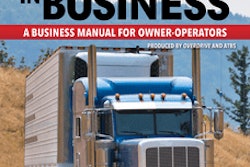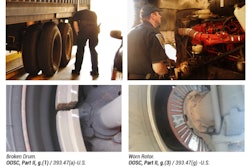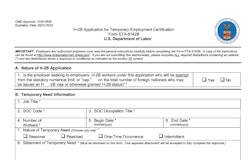- DOT called out New Mexico authorities as "dishonest" and for making excuses after a dispute over English language proficiency enforcement.
- DOT said it tested Harjinder Singh, the driver behind the triple-fatal Florida turnpike crash, and he failed badly, but New Mexico said Singh did communicate in English during a July traffic stop.
- DOT concluded its statement with a stern warning: “States that do not enforce ELP are on notice, and USDOT will have more to share soon.”
The DOT’s investigation into the triple-fatal Florida turnpike crash and driver Harjinder Singh has boiled over into a heated dispute about whether states are properly enforcing President Donald Trump’s English language proficiency executive order and proper CDL credentialing.
DOT on August 19 released initial findings in the investigation calling out “despicable” failures at the state level that led to California and Washington issuing Singh CDLs and New Mexico not putting him out of service for lacking English language proficiency.
“If states had followed the rules, this driver would never have been behind the wheel and three precious lives would still be with us,” said DOT Secretary Sean Duffy attendant to the release of the investigation's findings last week. “Non-enforcement and radical immigration policies have turned the trucking industry into a lawless frontier.”
Asked directly by Overdrive about the comments from DOT, California denied any missteps and Washington said it’s investigating how it issued Singh a full-term CDL despite the limited term of his legal stay in the U.S. as an asylum seeker.
And now New Mexico reports Singh was in fact able to communicate in English.
While DOT’s investigation found that on July 3, 2025, state police there “conducted a roadside inspection of the driver and issued a speeding ticket," it found "no indication that an ELP assessment was administered.” The DOT’s release further called out New Mexico for not enforcing ELP as “an out-of-service condition, despite the requirement being in effect since June 25, 2025.”

[Related: Overdrive reporting reveals at least 60,000 active non-domiciled CDLs]
Asked directly about its ELP enforcement and Singh's inspection, a New Mexico Department of Public Safety spokesperson told Overdrive it conducted a "thorough review of the traffic stop by our officer," determining the "officer and driver were able to successfully communicate throughout the course of a Level II roadside inspection,” a walk-around driver and vehicle inspection.
DOT’s investigation after the crash, on the other hand, found Singh pretty hopeless with English. He failed the FMCSA's own assessment after the crash. DOT said Singh provided "correct responses to just 2 of 12 verbal questions," accurately identifying only "1 of 4 highway traffic signs.”
New Mexico DPS added that it “will be enforcing the ELP in accordance with federal regulations," but as of August 22, “no drivers have been placed OOS with respect to the ELP test,” according to the spokesperson. “For context, the FMCSA did not provide states with a standardized ELP test, which necessitated the development of our own."
[Related: New Mexico releases bodycam video of inspection of Harjinder Singh]
DPS noted it was “currently training our officers on the appropriate procedures for administering this test. Our goal is to have all of our commercial motor vehicle enforcement officers fully trained by early September, within the next two weeks.”
How can a driver pass an inspection with New Mexico law enforcement but fail one six weeks later with FMCSA investigators? DOT responded to an Overdrive query about the discrepancy by bashing New Mexico as “dishonest” and making excuses.
“Briefly conversing about a speeding ticket is not the same as conducting an ELP test," said a DOT spokesperson. "If NMPDS did -- how did the driver score? They don’t have that information because they did not conduct the proper test.”
The spokesperson reiterated that FMCSA investigators tested Singh last week and, generally, doesn't buy New Mexico’s story.
“When FMCSA changed ELP enforcement, it provided CVSA with a standardized ELP test that CVSA shared with all the state partners -- including New Mexico,” the DOT spokesperson said. “Many other states are enforcing ELP -- New Mexico claiming they did not receive guidance is both dishonest and not an effective excuse.”
The new ELP policy advises personnel to initiate all roadside inspections in English. If the inspector’s initial contact with the driver indicates that the driver may not understand the initial instructions, the inspector should conduct an ELP assessment to evaluate the driver’s compliance with 49 CFR § 391.11(b)(2). That assessment, according to FMCSA, should consist of a driver interview and a highway traffic sign recognition assessment.
[Related: Enforcing Trump's English language mandate 'not part of California law': CHP]
The DOT’s response included a stark warning for states like New Mexico and California, which has also admitted not enforcing the ELP requirement: “States that do not enforce ELP are on notice, and USDOT will have more to share soon.”
Duffy on social media teased a major announcement on that front on Tuesday at 9 a.m.
Potentially, non-compliance with federal regulations could cost states millions.
When Overdrive reporting first uncovered California’s refusal to enforce the federal ELP mandate, the Commercial Vehicle Safety Administration explained how it gives states some leeway to align federal rules with state laws, but did say that ultimately, if states step too far out of bounds, they can lose major funding.
The federal government helps fund state truck-enforcement programs through Motor Carrier Safety Assistance Program grants, but states can lose that funding over noncompliance with federal rules.
In 2024, California got $30 million in MCSAP funding, New Mexico got $6.7 million. Washington, also called out by DOT over its issuance of a regular CDL to Singh, got $9.8 million.
Singh's attempted illegal U-turn and the three deaths it caused has led to direct responses from three departments of the federal government. The State Department has paused visas for commercial truck drivers, the Department of Homeland Security has vowed to work with DOT to tighten up immigration enforcement in trucking, and the DOT appears ready to drop the hammer on states.
[Related: State department pauses truck driving visas: Who is and isn't impacted]














